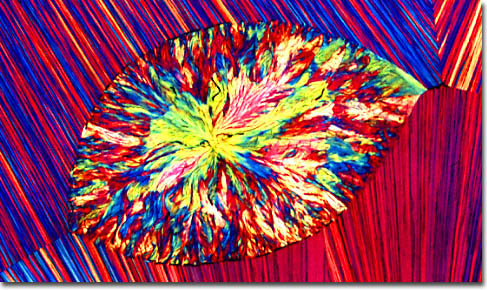|
Insoluble in the blood, cholesterol must be attached to certain protein complexes, called lipoproteins, in order to be carried through the bloodstream. Low-density lipoproteins (LDLs) transport cholesterol from its site of synthesis in the liver to the various tissues and body cells, where it is separated from the lipoprotein for use by the cell. High-density lipoproteins (HDLs) often transport excess or unused cholesterol from the tissues back to the liver, where it is broken down into bile acids and excreted. Arterosclerotic deposits, which build up in the blood vessels, consist primarily of cholesterol attached to LDLs. HDLs may actually serve to retard or reduce arterosclerotic buildup, and people with low high-density lipoprotein levels may actually be at additional health risk.
|
